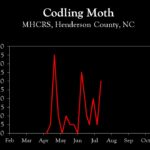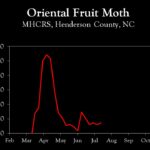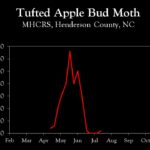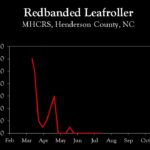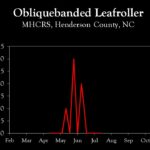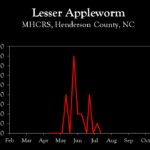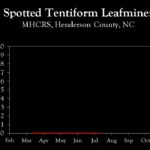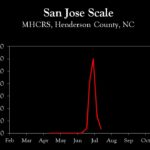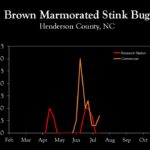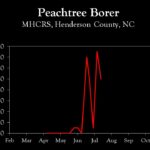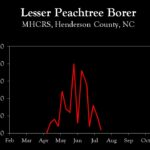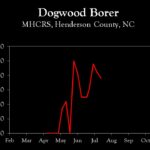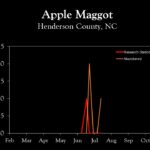WNC Orchard Insect Pest Populations – July 18, 2024
go.ncsu.edu/readext?1014388
en Español / em Português
El inglés es el idioma de control de esta página. En la medida en que haya algún conflicto entre la traducción al inglés y la traducción, el inglés prevalece.
Al hacer clic en el enlace de traducción se activa un servicio de traducción gratuito para convertir la página al español. Al igual que con cualquier traducción por Internet, la conversión no es sensible al contexto y puede que no traduzca el texto en su significado original. NC State Extension no garantiza la exactitud del texto traducido. Por favor, tenga en cuenta que algunas aplicaciones y/o servicios pueden no funcionar como se espera cuando se traducen.
Português
Inglês é o idioma de controle desta página. Na medida que haja algum conflito entre o texto original em Inglês e a tradução, o Inglês prevalece.
Ao clicar no link de tradução, um serviço gratuito de tradução será ativado para converter a página para o Português. Como em qualquer tradução pela internet, a conversão não é sensivel ao contexto e pode não ocorrer a tradução para o significado orginal. O serviço de Extensão da Carolina do Norte (NC State Extension) não garante a exatidão do texto traduzido. Por favor, observe que algumas funções ou serviços podem não funcionar como esperado após a tradução.
English
English is the controlling language of this page. To the extent there is any conflict between the English text and the translation, English controls.
Clicking on the translation link activates a free translation service to convert the page to Spanish. As with any Internet translation, the conversion is not context-sensitive and may not translate the text to its original meaning. NC State Extension does not guarantee the accuracy of the translated text. Please note that some applications and/or services may not function as expected when translated.
Collapse ▲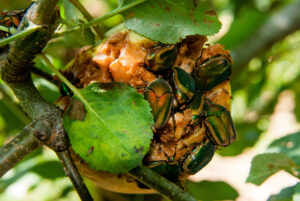 Second generation codling moth is still a potential concern throughout the region. At about 1720 and 2100 degree-day (DD) accumulations, adult emergence is about 40% and 70% complete in Henderson and Cleveland County, respectively. See the June 26 update for more information on the need and options for insecticidal control.
Second generation codling moth is still a potential concern throughout the region. At about 1720 and 2100 degree-day (DD) accumulations, adult emergence is about 40% and 70% complete in Henderson and Cleveland County, respectively. See the June 26 update for more information on the need and options for insecticidal control.
Emergence of first generation brown marmorated stink bug (BMSB) has begun in Cleveland County, where about 15% of the adult population has emergence as of June 17 (about 800 DD). Only 608 DD have accumulated since biofix in Henderson County, and it will be at least another 2 weeks before emergence begins (at 740 DD) at this elevation. It is noteworthy that DD accumulations for BMSB are about 2 weeks ahead of last year. Also, to date BMSB pheromone trap captures have been very low. Hopefully the trend of declining BMSB populations we’ve seen in recent years will continue.
There have been some questions about insecticides for control of Japanese beetles and June bugs. There are a wide range of products that will provide effective control, including carbaryl (Sevin), and most neonicotinoids and pyrethroids. I would opt for either carbaryl or a neonicotinoid (check PHI of the product) at this time in locations where BMSB emergence has not yet begun, since the later that pyrethroid applications can be delayed for BMSB the lower the chance of flaring secondary pests (e.g., primarily scale and woolly apple aphid at this time).
Learn more about southeastern apple insect pests at the Apple Insect Management page.
2024 Average Weekly Trap Captures
| HENDERSON COUNTY | |||
| Insects per trap | |||
| Jul 2 | Jul 8 | Jul 15 | |
| Codling moth | 2.0 | 0.5 | 3.0 |
| Oriental fruit moth | 14.5 | 12.0 | 14.5 |
| Tufted apple bud moth | 0.0 | 0.0 | 1.0 |
| Redbanded leafroller | 0.0 | 0.0 | 0.0 |
| Obliquebanded leafroller | 0.0 | 0.0 | 0.0 |
| Lesser appleworm | 0.0 | 0.0 | 0.0 |
| Apple maggot (research orchards) | 0.0 | 0.0 | 0.0 |
| Apple maggot (abandoned orchard) | 0.0 | 0.0 | 1.0 |
| Brown marmorated stink bug (commercial) | 0.3 | 0.3 | 0.7 |
| Brown marmorated stink bug (unsprayed research orchard) | 0.7 | 0.0 | 0.0 |
| Spotted tentiform leafminer | 0.0 | 0.0 | 0.0 |
| Dogwood borer | 48.0 | 42.0 | 38.0 |
| Peachtree borer | 1.0 | 1.0 | 10.0 |
| Lesser peachtree borer | 8.0 | 5.0 | 1.0 |
| San Jose scale | 165.0 | 66.5 | 17.5 |
*Note that these averages illustrate only the timing of insect emergence and fluctuations in populations, and are not representative of population levels in any given orchard. The only way to have an accurate assessment of an individual orchard’s populations is to set up traps in that orchard.
2024 Accumulated Degree Days
| HENDERSON COUNTY | ||||
| Jul 2 | Jul 8 | July 15 | ||
| Codling moth (Biofix: April 15) | 1326 | 1483 | 1665 | |
| Oriental fruit moth (Biofix: March 15) | 1994 | 2176 | 2393 | |
| Tufted apple bud moth (Biofix: April 15) | 1700 | 1882 | 2099 | |



